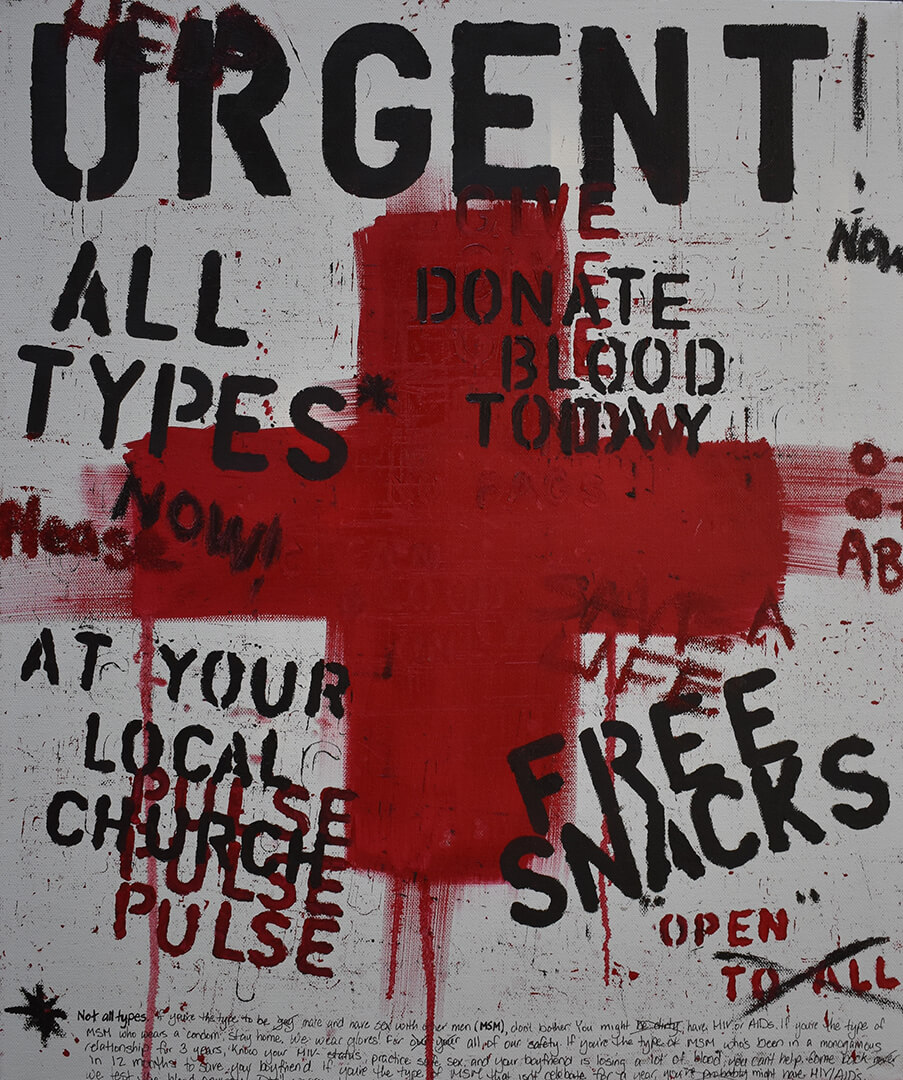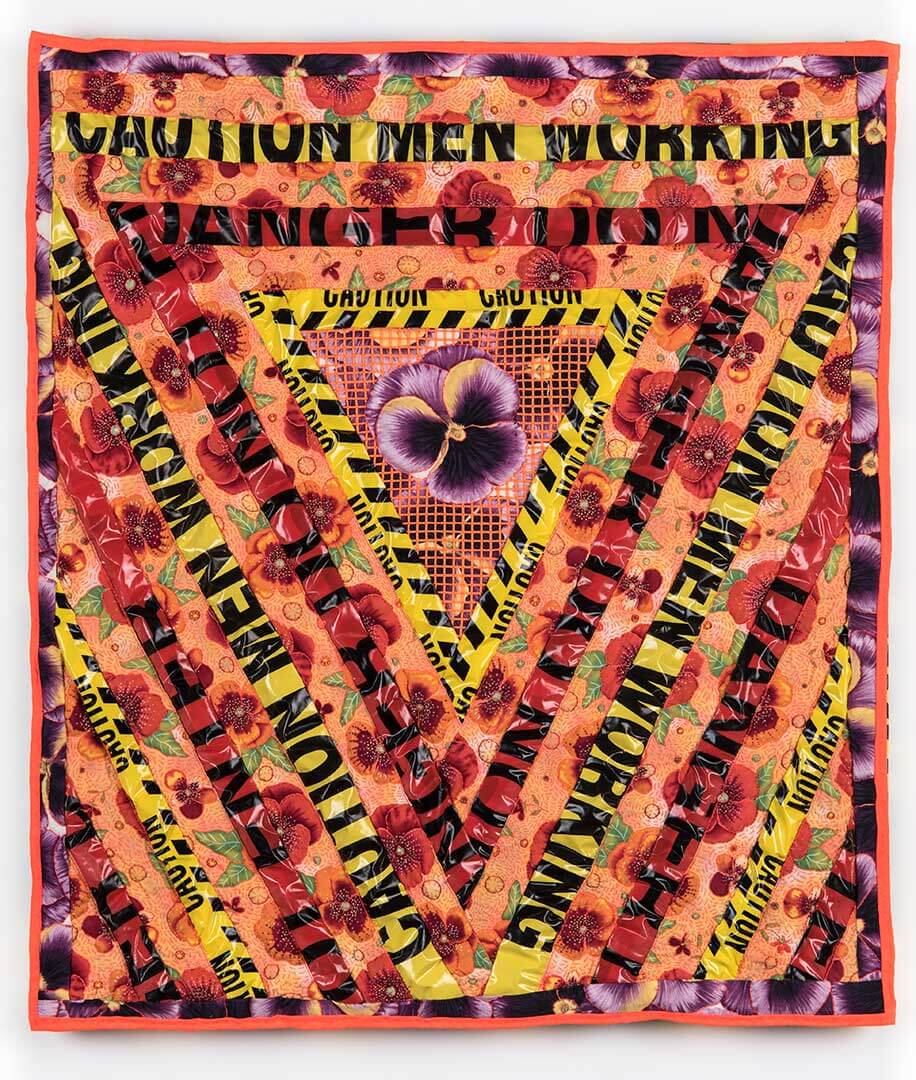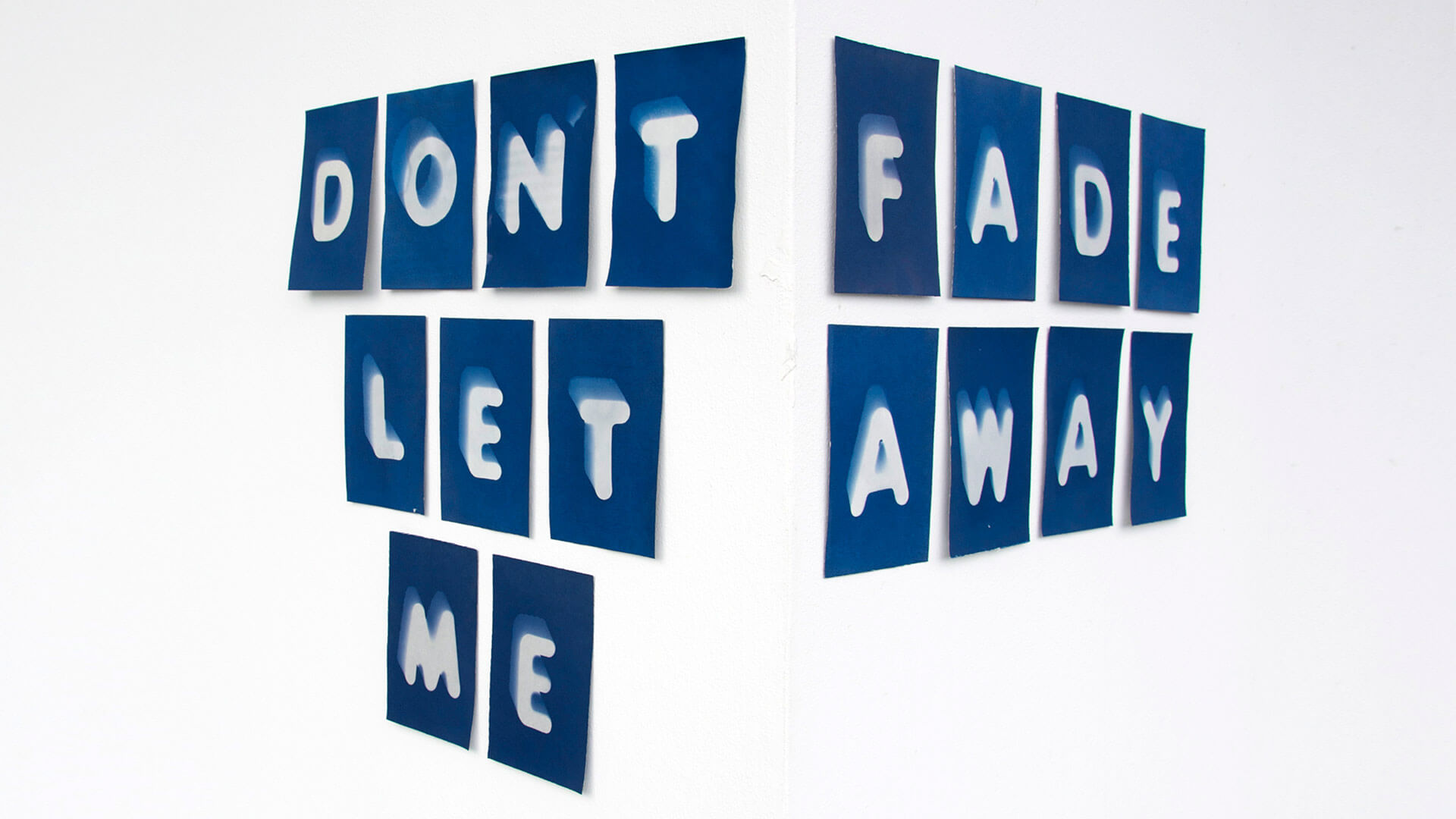- October 29, 2019
- By Sala Levin ’10
More than two decades after deaths from the HIV/AIDS epidemic peaked in the United States, the availability of effective therapies has pushed the disease down the list of public health crises. Just glance at the Instagram posts from the effusively positive—and HIV-positive—Jonathan Van Ness, one of the Fab Five from the Netflix series “Queer Eye,” dancing while making his morning coffee. And former Los Angeles Laker superstar and team president Magic Johnson hardly slowed down after his diagnosis.
“Still Here,” a new exhibit in Stamp Gallery, wants to remind visitors that, while much progress has been made in reducing the mortality of HIV/AIDS, the disease has not gone away—especially in Washington, D.C., where young people are diagnosed with HIV at twice the national average, according to the D.C. Department of Health.
A collaboration between the Stamp Gallery and the Office of Multicultural Involvement and Community Advocacy, the exhibit marks 30 years since panels of the AIDS Memorial Quilt were displayed in the gallery. The new exhibit brings back several panels of the massive quilt that memorializes people who died from the disease, and incorporates “contemporary artists who are working on artwork about HIV/AIDS in dialogue with the quilt,” said Tara Youngborg, manager of the Stamp Gallery.
Paper cuts, mixed media assemblage, text-based artwork and more are part of the exhibit, on view through Dec. 7. “A lot of the work … really references or functions in relation to both the quilt and protest art by AIDS activist groups in the 1990s,” said Youngborg.
Scroll through some examples below of the artwork on display in “Still Here.”

Lucas Rougeux, “Clean Blood Only,” oil paint, pigment stick, and marker on canvas, 2019
Lucas Rougeux’s painting, with “open to all” crossed out, is a response to the 2016 mass shooting at the gay nightclub Pulse in Orlando, where a gunman killed 49 people. Tight restrictions on blood donations by men who have had sex with other men meant that “while people’s friends were dead or dying and needed blood, men couldn’t donate to help their friends out,” Youngborg said. “Visually, he’s referencing a lot of protest signs using the bold language.”

John Paradiso, “Caution Pansy,” machine-sewn top, hand-quilted cotton pansy fabric, appropriated inkjet photo printed on fabric, found 3 mil poly caution tape, thread, 2013 (Photo courtesy of Anything Photo)
This quilted piece, part of a series called “Men Working,” refers directly to the AIDS Memorial Quilt. “The caution and danger tape is there because there’s a lot of anxiety around HIV and contracting it,” said Youngborg. John Paradiso is “juxtaposing this really beautiful image with this hazard because that’s a lot of what folks think about when you think of a young person who is living with HIV.” The title of the piece and the pansy imagery point to the derogatory use of the flower’s name to refer to gay men.

Antonius-Tín Bui, “Not Sorry for the Trouble 3 (Silence = Death),” reclaimed cut paper forms, spray paint, 2019
Antonius-Tin Bui, who uses they/them pronouns, uses traditional Asian paper-cutting techniques here to “confront stereotypes about Asian Americans and also mark a space for themselves in that canon,” said Youngborg. Bui’s series of paper cuts speak to the aggression and discrimination they see as both a person of color and a queer person.

Shan Kelley, “Self Portrait,” cyanotypes on archival paper, 2013
Canadian artist Shan Kelley, a Canadian living with AIDS, often uses text in his work “to speak directly to folks and convey a message very bluntly,” said Youngborg. This piece “really fits with the titling ‘Still Here’ and the thesis that people with AIDS are still here and that there are significant barriers to prevention and treatment,” she said. Calling the work a self-portrait “is a metaphorical way of showing himself without the baggage of having his body included in it,” said Youngborg, adding that “he’s saying, ‘Don’t let me fade away’—you’re looking for him in that, or you’re like, ‘Oh, is he already fading away?’”
Topics
Arts & Culture